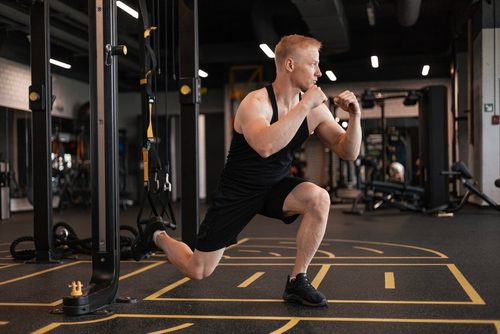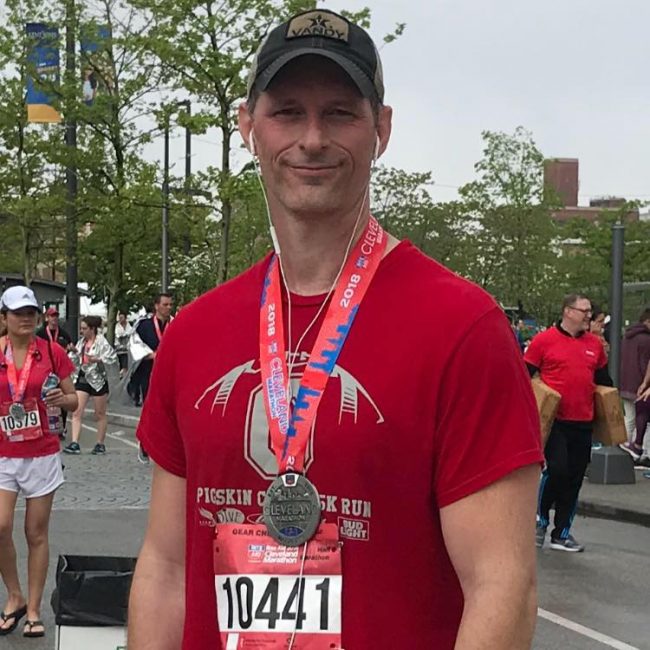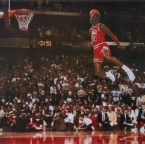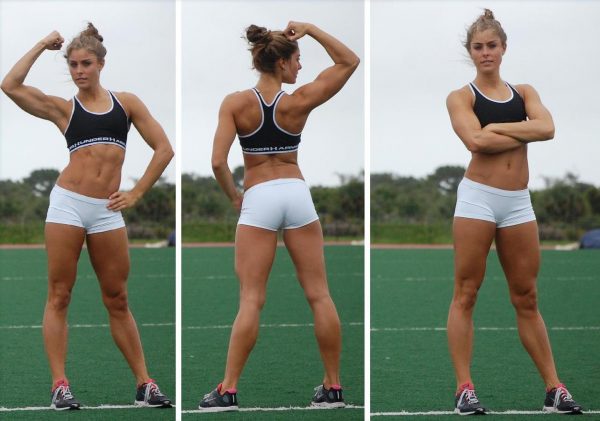Athletes are always looking for an edge that will give them more power.
While traditional exercises like squats and lunges have long been staples in strength and conditioning programs, there is one exercise that often goes unnoticed but holds immense potential: the Bulgarian Split Squat.
In some ways, the Bulgarian Split Squat is even more effective for athletes, even back squats.
Don’t believe me? Buckle up and I will make you a believer.
Let’s get started.

Where Did Bulgarian Split Squats Come From?
Alright, let’s take a breather from the iron pumping and flex our mental muscles for a sec. Ever wonder where the Bulgarian Split Squat came from? It’s got a pretty cool origin story, so buckle up and let’s take a ride on the history train.
Our buddy, the Bulgarian Split Squat, didn’t just materialize out of thin air. It was born in – drumroll, please – Bulgaria! Yeah, it’s named after its homeland, but the real catalyst was a guy named Angel Spassov, who was the brain behind the Bulgarian weightlifting team’s success in the 80s.
Those guys were real-life superheroes, smashing records like it was going out of style. Thanks to Spassov, this killer leg move made its way into the training routines of elite athletes, and the rest is history.
Now let’s fast-forward to the modern-day sweat factories, our gyms. In the realm of athletic training, the Bulgarian Split Squat isn’t just a player; it’s a VIP. This beast of an exercise is a key part of the routine for athletes serious about upping their game.
The Bulgarian Split Squat’s combo of strength, balance, and flexibility is like a secret weapon. It blasts your quads, hamstrings, glutes, and even your core. It’s not just about muscle—it’s about stability, symmetry, and preventing injuries. That’s why pros from all sports—from football to track—are adding it to their workouts.

Anatomy of the Bulgarian Split Squat
Now that we know where this exercise came from, let’s master it. Trust me, mastering this beast is like unlocking your personal superpower. So let’s get into the nitty-gritty, step by step.
First things first, you gotta find yourself a bench. Your rear foot will be chillin’ up there while your front foot’s doing the heavy lifting. Stand lunge-length in front of the bench and extend your rear foot onto it. The top of your foot should be flat against the bench—like it’s taking a nap.
Now, brace your core like you’re preparing for a hit—this isn’t just a leg exercise, your core’s got to stay in the game too. Start lowering your body by bending your front knee until your thigh is parallel to the ground—like you’re about to sit, but think better of it. All the while, your knee should stay right above your foot, not shifting forward. Then, drive back up through your front heel. Rinse and repeat, my friend.
So, what muscles are getting the burn here? The Bulgarian Split Squat is an all-star, working multiple muscle groups. Your quads and glutes are doing the grunt work, but your hamstrings and calves are also joining the party. And let’s not forget that trusty core. It’s getting a solid workout, helping you maintain balance and stability.
That’s the beauty of the Bulgarian Split Squat—it’s a total leg day in one move, plus a core challenge. So next time you’re getting your sweat on, remember: proper form is key, and this exercise is about way more than just building muscle. It’s about creating balance, stability, and all-round athletic awesomeness.
Benefits of Bulgarian Split Squat for Athletes
Let’s huddle up and chat about why the Bulgarian Split Squat is your new best friend in the gym. Buckle up, because this bad boy is packing a bunch of benefits for us athletes.
Let’s start with the no-brainer: enhanced strength and flexibility. This ain’t your grandma’s squat. When you’re hoisting yourself up and down with one leg, you’re recruiting all sorts of muscle fibers, not just in your legs but your core too. Your quads, glutes, hamstrings, and calves are getting the workout of their lives, getting stronger rep by rep. Plus, your hip flexors get a sweet stretch, promoting flexibility that’s gonna help you out in pretty much every sport.
Now let’s talk balance and stability—two things you can’t have too much of as an athlete. The Bulgarian Split Squat is like a personal trainer for your balance. You’re there on one foot, trying not to topple over—your body’s gotta find its equilibrium. That’s your stabilizer muscles doing overtime, getting stronger and better at their job. More balance in the gym equals better coordination on the field, court, or track.
Okay, how about lower body symmetry? Most of us have a dominant leg that likes to take over. Not with the Bulgarian Split Squat. You’re working one leg at a time, which means each leg has to pull its weight—no freeloading allowed. This can help correct muscle imbalances, giving you symmetrical strength and power for your sport.
Lastly, let’s talk injury prevention—everyone’s least favorite topic until they get injured. By improving your strength, flexibility, balance, and muscle symmetry, the Bulgarian Split Squat is like your personal bodyguard against injuries. It’s training your body to move correctly and efficiently, reducing the risk of those “ouch” moments.
Common Mistakes and How to Avoid Them
Time for some real talk. As epic as the Bulgarian Split Squat is, there’s room for error if you’re not careful. Let’s go over common mistakes and how to dodge ’em.
Mistake numero uno: letting your front knee cave in or push too far forward. This ain’t good for your joints, pal. Keep your knee in line with your foot and don’t let it jut past your toes when you lower down. This keeps the force on your muscles, not your knee.
Next up, don’t let your torso bend forward. Remember, your core’s gotta stay engaged. Imagine a string pulling you up from the crown of your head. This helps keep your back straight and puts the work on your legs and glutes, not your back.
Lastly, don’t rush! This isn’t a race. Controlled, steady movements are key. Lower yourself down slow and controlled, then power back up. This ensures you’re hitting the right muscles and not relying on momentum.
My golden rule? When in doubt, dial it back. It’s better to perform the exercise correctly with less weight than to go heavy and risk injury. Remember, this is about long-term athletic gains, not short-term ego boosting. Keep these tips in mind and you’ll be a Bulgarian Split Squat pro in no time.
Bulgarian Split Squats vs Barbell Back Squats For Athletes
Both the Bulgarian Split Squat and the Barbell Back Squat have their own unique merits and choosing one over the other largely depends on your specific goals and circumstances. However, for athletes, the Bulgarian Split Squat might have a few advantages over the traditional barbell back squat. Here’s why:
- Unilateral Strength and Balance: The Bulgarian Split Squat is a unilateral exercise, meaning it works one side of your body at a time. This can help identify and correct muscular imbalances between your left and right sides. In contrast, the barbell back squat is a bilateral exercise, which can sometimes allow a stronger side to compensate for a weaker one.
- Stability and Core Engagement: Since the Bulgarian Split Squat requires you to balance on one foot, it calls for significant core engagement and challenges your stability. This is highly beneficial for athletes since most sports require excellent balance and stability.
- Flexibility and Mobility: The Bulgarian Split Squat also stretches the hip flexors of the rear leg, which can contribute to improved mobility. This is particularly useful for athletes as they often need to demonstrate a high degree of flexibility and mobility in their sport.
- Less Spinal Load: In comparison to back squats, the Bulgarian Split Squat puts less compressive stress on the spine since it typically involves lighter weights. This might be a safer option for athletes who want to avoid potential back issues.
- Sport-specific Training: The unilateral nature of the Bulgarian Split Squat may have better carryover to many sports that often require single-leg strength and stability, like sprinting, jumping, and changing directions quickly.
Remember, though, these exercises are not mutually exclusive. Incorporating both into a well-rounded training program can yield the best results. Always consider your own fitness l
Athletes That Use The Bulgarian Split Squats
Most every athlete out there uses some variation of the Bulgarian Split Squat with their training. If they don’t they strength coaches are probably trash.
A quick search of the internet led us to videos of NFL player Raheem Abdullah performing the exercise while using a trap bar. The video is pasted below for your convenience.
On top of that we found Taylor Heinicke doing Bulgarian Split Squats with knee drive on the landmine.
We also found soccer player Sergio Ramos performing these split squats as part of his workout routine
I’m sure we could have found a lot more but you get the picture. Pro athletes love Bulgarian Split Squats.
Final Word
Alright, team, we’ve done the deep dive on the Bulgarian Split Squat. This exercise is no joke—it’s a key player for building strength, flexibility, balance, and symmetry. Plus, it’s a serious bodyguard when it comes to preventing injuries.
From the basketball courts to the tennis courts, from the football field to the track, elite athletes worldwide are using this gem to elevate their game. Why? Because it works. It’s time-tested and athlete-approved.
So, ready to follow in the footsteps of the greats? Ready to up your game? Then it’s time to make the Bulgarian Split Squat part of your routine. Remember, progress at your own pace, focus on form, and consistency is king.

Ryan is a former college wrestler and lifelong fitness fanatic. He has run half marathons, done mud runs, placed in body transformation contests, coached wrestling, and now coaches girls’ soccer. Not to mention he has also tried literally hundreds of supplements over the years and has a vast and thorough supplement knowledge. He has written for Muscle & Strength, Testosterone Junkie, The Sport Review and other publications. He is also the editor-in-chief of this website and has over 25 years of experience in the fitness industry. Feel free to connect with him on his LinkedIn page below.








